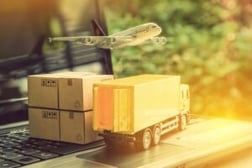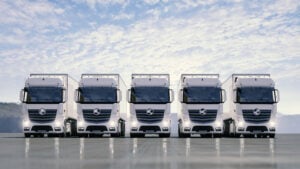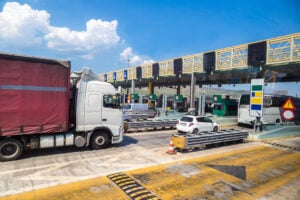In part 1 of this blog post, I discussed the growth and evolution of the Internet of Things (IoT) and some of the challenges it presents for security. Securing IoT...
Finding new ways to drive value from the Internet of Things
3 mins read
The Internet of Things promises to change everything, but with each passing day, there seems to be growing cynicism, even hostility, to widespread adoption. In this blog, Amit Sachdeva argues that businesses need to better demonstrate how IoT and affiliated technologies will transform the world for the better.
 For many businesses, successfully launching an Internet of Things (IoT) enabled service or application would seem like a reason to celebrate in itself. Yet, the real value of IoT comes from the data-led insights that can be derived from connected devices. The best way to manage and drive value from IoT data is with the help of artificial intelligence (AI), which is able to detect data patterns that might not be obvious to the human eye. Add in the strong degree of trust that distributed ledger technologies (DLT) like blockchain can bring to IoT - and you’ve got a powerful combination of three technologies that could have a truly transformational impact on how businesses operate and interact with their customers, and how people engage with the world around them.
The two ways to leverage IoT data
For many businesses, successfully launching an Internet of Things (IoT) enabled service or application would seem like a reason to celebrate in itself. Yet, the real value of IoT comes from the data-led insights that can be derived from connected devices. The best way to manage and drive value from IoT data is with the help of artificial intelligence (AI), which is able to detect data patterns that might not be obvious to the human eye. Add in the strong degree of trust that distributed ledger technologies (DLT) like blockchain can bring to IoT - and you’ve got a powerful combination of three technologies that could have a truly transformational impact on how businesses operate and interact with their customers, and how people engage with the world around them.
The two ways to leverage IoT data
 Imagine you’re a business with a fleet of cars, trucks, airplanes or freight containers. Using the IoT, you’re able to capture two types of information that can be collected from them: primary operational information - such as location, engine condition and temperature data - to support the day-to-day operations of your business; and aggregated big data – which you can use to analyse a much broader range of factors about your services and enhance them through R&D, for example. Organisations may already use some form of analytics to manage both types of information. However, the enhanced capability of AI platforms to capture patterns of behaviour in both people and ‘things’, combined with the strategic insights these platforms can offer, could take a business to the next step.
Imagine you’re a business with a fleet of cars, trucks, airplanes or freight containers. Using the IoT, you’re able to capture two types of information that can be collected from them: primary operational information - such as location, engine condition and temperature data - to support the day-to-day operations of your business; and aggregated big data – which you can use to analyse a much broader range of factors about your services and enhance them through R&D, for example. Organisations may already use some form of analytics to manage both types of information. However, the enhanced capability of AI platforms to capture patterns of behaviour in both people and ‘things’, combined with the strategic insights these platforms can offer, could take a business to the next step.
That’s where DLTs such as blockchain come in, allowing IoT data to be shared and stored securely across that ecosystem and value chain. Power of IoT, AI and DLTs in connected cars"Increasingly, there is a need for IoT data to be shared across a wider IoT ecosystem too in order to maximise its benefits."
 The connected car ecosystem is the perfect example of how AI, IoT and DLTs interact. As a car travels along, it generates and receives information as part of a wider IoT ecosystem, or vehicle-to-anything (V2X), environment. So, when it passes through an automated toll booth a transaction occurs that captures information about the vehicle, but it also requires access to a payment ecosystem that enables the secure, automated transmission of funds from the owner to the toll operator. This could be done in a variety of ways, including e-wallet technology, banking, charge card, etc.
The connected car ecosystem is the perfect example of how AI, IoT and DLTs interact. As a car travels along, it generates and receives information as part of a wider IoT ecosystem, or vehicle-to-anything (V2X), environment. So, when it passes through an automated toll booth a transaction occurs that captures information about the vehicle, but it also requires access to a payment ecosystem that enables the secure, automated transmission of funds from the owner to the toll operator. This could be done in a variety of ways, including e-wallet technology, banking, charge card, etc.
This could determine characteristics about the volume of cars going through the toll system, the time of day, type of vehicle, type of payment, direction, and so on, helping different players in the connected car ecosystem to understand more about their customers, vehicles and road usage. This data can then be used to determine not just how many toll booths need to be open at different times of the day, or when to close them for maintenance – but also if there might be market potential for opening a new supermarket or service station targeting commuters, for example. The challenges with IoT, AI and DLTs The architecture and hardware/software environments associated with IoT, AI and DLTs are different, which can make it challenging for businesses to bring them together in an-easy-to-operate solution."Perhaps more significantly than that though, each transaction becomes part of potentially millions of transactions that can be analysed by a big data AI engine."
"Each of the three technologies also has its own fragmented systems and standards, with an array of security, data privacy, legal, and ethical issues."
 There is also cynicism, technology fatigue and downright opposition to adoption in some IoT, AI and DLT use cases. In my view, that just shows that there is a need for businesses to better demonstrate the value of using these technologies, whether in combination or not, to improve the services they provide while addressing potential customer concerns. For example, blockchain should be considered only when there is a clear need for information to be shared in a secure, immutable way. In the case of an IoT value chain, the constituent organisations in the chain need to agree on what events need to be managed within some form of DLT framework. It shouldn’t be applied to every IoT project just to look cutting edge.
There is also cynicism, technology fatigue and downright opposition to adoption in some IoT, AI and DLT use cases. In my view, that just shows that there is a need for businesses to better demonstrate the value of using these technologies, whether in combination or not, to improve the services they provide while addressing potential customer concerns. For example, blockchain should be considered only when there is a clear need for information to be shared in a secure, immutable way. In the case of an IoT value chain, the constituent organisations in the chain need to agree on what events need to be managed within some form of DLT framework. It shouldn’t be applied to every IoT project just to look cutting edge.
As for AI, data from IoT devices in remote locations might only be providing a fraction of the overall data feeds powering an AI engine. This means the use of AI needs to be selective, rather than the default option. There are clear limitations in the blockchain architecture which restrict the sheer volume of data collected from remotely connected devices too. Like with AI, only some data can be processed - so it is important to understand the importance of data management required for near real-time reconciliation on a blockchain. As everything from cities and cars to hairdryers and cat flaps becomes ‘smart’, and connectivity becomes more pervasive in the world around us, businesses need more efficient, intelligent and secure ways to capture, process and share the growing volume of IoT data. Individually, IoT, AI and DLTs are already changing the way businesses operate – but in combination they could change our world forever. Find out more about how IoT is going to radically transform our cities here."For these technologies to gain acceptance as valuable, we need to see greater focus on converged solutions that solve real-world problems."
Leaders In Our Own Right
Explore related solution
The use of Internet of Things (IoT) technology is growing rapidly as more consumers and businesses recognise the benefits offered by smart devices. The range of IoT...
Creating ubiquitous mobile experiences for people and things requires organisations to re-think how new innovative services are connected. When traditional, inherently...
What’s next?
Explore Our Solutions
Explore our solutions through immersive platform demos or engage with our surveys and pricing calculators
Explore Our Solutions
Explore our solutions through immersive platform demos or engage with our surveys and pricing calculators
Explore Our Solutions
Explore our solutions through immersive platform demos or engage with our surveys and pricing calculators


.png?width=310&height=159&name=image%20(1).png)